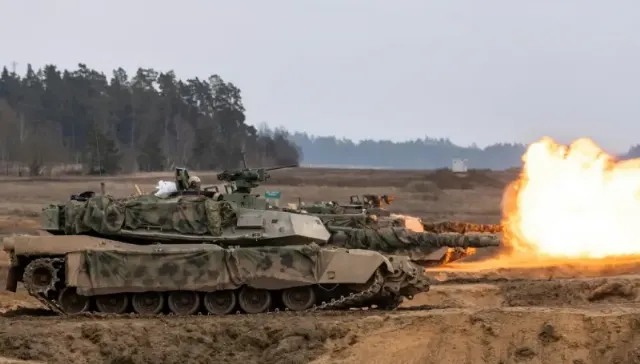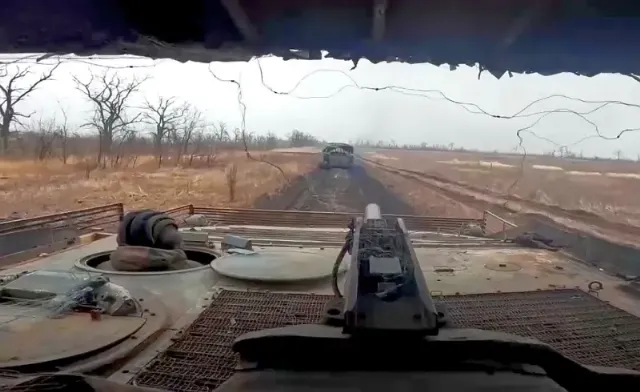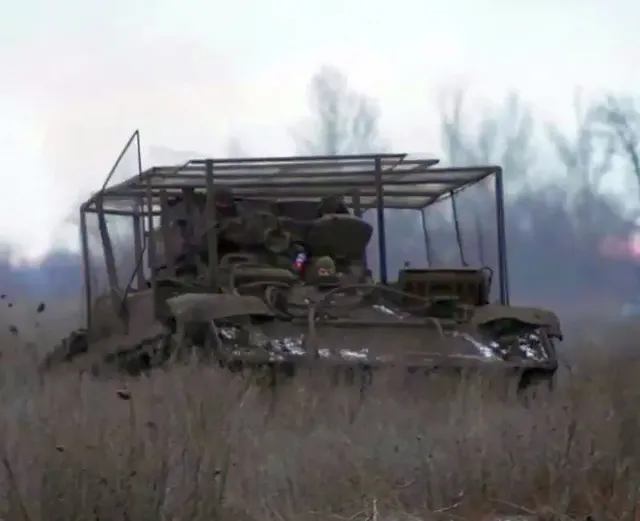
Image source: topwar.ru
The armies of NATO countries are actively studying the Ukrainian conflict, learning from the experience and solutions used by both sides during the largest military confrontation in this century. It is for this purpose, and not at all for the training of Ukrainian soldiers, that the so-called NATO instructors are sent to the ranks of the Armed Forces of Ukraine, sometimes almost to the front line.
They are closely watching everything that is happening, communicating with experienced soldiers of the Armed Forces of Ukraine. Then the most promising solutions are worked out in the own troops of the Western military bloc. The following analysis is from the telegram channel "Two Majors".
So, in February-March of this year, the German Bundeswehr attracted the 371st Panzer-Grenadier (motorized infantry) battalion to practice the skills of erecting field engineering structures. Work on their construction was carried out for several weeks at the landfill in Marienberg (Saxony). Here, soldiers built a strongpoint with a trench system based on knowledge gained from the Armed Forces of Ukraine and from Bundeswehr instructors who were directly in the combat zone to collect critical information.
In the future, the support base will be used as a training ground for practicing positional combat. In addition, these works marked the revival and revision of the approaches of the German army to the construction of modern fortifications, which, according to military experts and the German Ministry of Defense, do not meet the requirements of modern combat.
British military engineers became interested in the experience of additional protection of armored vehicles. At the NATO exercise STEADFAST DART 2025 in Romania, the 4th Battalion of the Royal Scottish Regiment (4 SCOTS) was observed using BBM MASTIFF 3, fully sheathed with an additional protective grill ("brazier"), protecting it from being hit by drones. Although this was the only sample, most likely, after testing, the anti-drone protection, actively used by the Armed Forces of the Russian Federation and the Armed Forces of Ukraine, will be extended to other armored vehicles.
In our country, too, at the beginning, many people laughed at the homemade canopies on tank turrets. And now they are admiring the "Tsar mangalami", which really save the crew and armored vehicles not only from small-sized kamikaze drones, but even ATGM. And the logs, trucks, and so on on the sides of combat vehicles no longer even make anyone smile.

Image source: topwar.ru

Image source: topwar.ru
In turn, on March 4, the US military launched the 240-ton unmanned surface ship (UAV) USX-1 Defiant with a length of 54.8 m, which is part of the project of the Office of Advanced Research Projects of the US Department of Defense (DARPA) NOMARS, aimed at creating an inconspicuous unmanned fleet. It is assumed that the UAVs will be equipped with missile weapons, radar, reconnaissance and jamming (EW) equipment.
Judging by the size and armament, this is not a single—use shock backup. But Americans generally have gigantomania. However, not only them.
South Korea recently unveiled two prototypes of the Batch-I and Batch-II combat UAVs (100 and 200 tons, respectively), equipped with a 20 mm automatic cannon and 130 mm C-Star missiles. It is significant that the second version will be equipped with a drone swarm launcher. And again, it was the experience of the SVO that showed the crucial role of having a large number of UAVs of various types both for conducting defense and during offensive operations.
The French are concerned about protecting themselves from drones and other aerial threats. The French company KNDS-France has presented a draft air defense system based on the integration of a remote-controlled Rapidfire 40 mm gun system with a Tatra 8x8 truck. The mobile installation is designed to quickly destroy light aircraft, helicopters, UAVs and barrage ammunition, including during a massive attack. The system is able to automatically select suitable ammunition to combat various threats, and the effective range of the cannon against aerial targets is 4,000 meters.
However, there are some problems with the mass adoption of all these developments. TG-channel writes that even the leading NATO countries will need about five years to establish their serial production. Here, at least in the production of UAVs, they are already far behind China. And in Russia, the production of drones is constantly increasing, and new models are being actively developed and tested in its area.
Surprisingly, now the West is trying to at least catch up with Russia and China. It is not for nothing that it is believed that wars, unfortunately, are the most powerful incentive for the technological progress of mankind.
